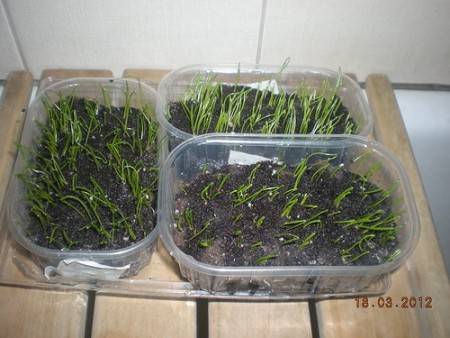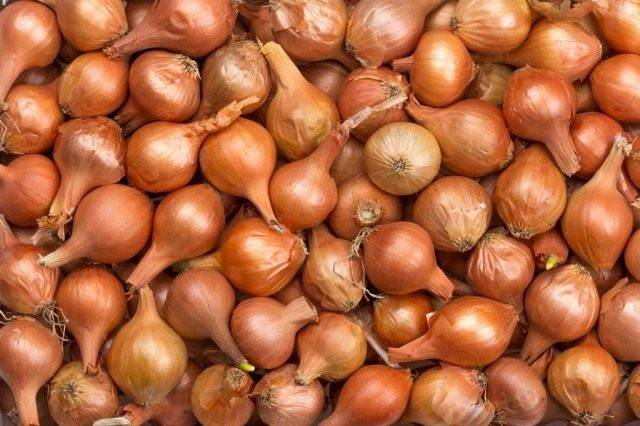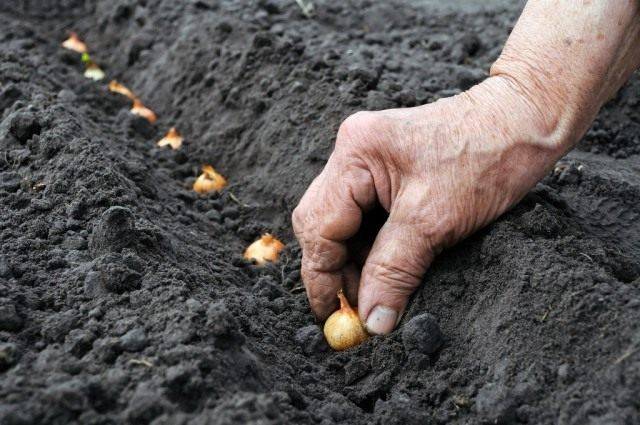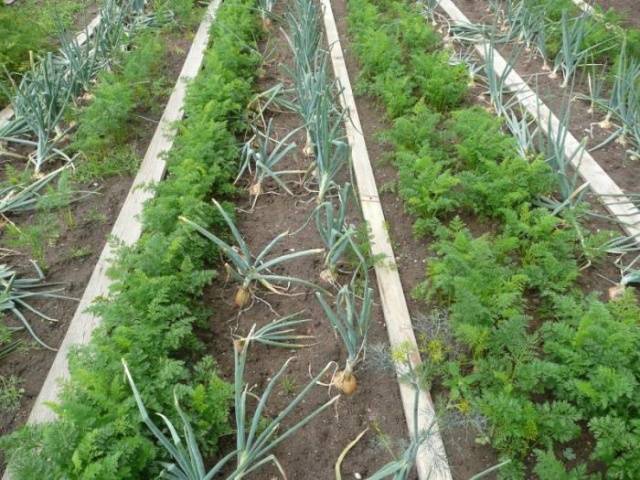Content
Onions are a staple on the Russians' table. It is grown on a large scale by many agricultural producers. Gardeners on their plots are also engaged in this vegetable crop. Onions are an amazingly tenacious plant. It is grown not only in regions with a mild climate, but also in Siberia and the Urals.
The features of obtaining a valuable and useful vegetable in the Urals in different ways, the features of planting, caring for onions will be discussed in our article.
Onion varieties for the Urals
The climatic conditions of the Urals are not characterized by a mild climate. Spring comes late and autumn too early. The vegetative period for the comfortable development of onions is limited. But local residents manage to grow a good harvest of healthy vegetables.
What varieties of onions are better for planting in the Urals? When choosing, they are guided by the seeds and seeding of a vegetable adapted to the climate. For a short summer, early and mid-season onion varieties are more suitable. Most often grown in the Urals:
- Arzamassky;
- Local Bessonovsky;
- Buran;
- Boterus;
- Myachikovsky 300;
- Siberian Annual;
- Strigunovsky local;
- Exibition;
- Timiryazevsky;
- Karantalsky;
- Cape;
- Studtgarden Riesen (Dutch selection).
Of course, this is only part of the onion varieties. Each gardener of the Urals decides for himself which seed to use.
Ways to get a turnip
You can grow onions in different ways, all of them are suitable for the Urals:
- The seedling method involves sowing black seeds in a container in an apartment some time before planting in open ground.
- Sowing seeds directly to the garden in early spring.
- Planting onions-seeding. With this method, onions are obtained in two years.
Let us consider in more detail each of the methods of growing onions in the Urals, as well as the features of caring for plantings in a region with a harsh climate.
Seedling method
This method of growing onions is effective in home gardens. Gardeners of the Urals receive turnip seeds in one season. Seedlings before planting in the ground should be up to 30-35 days old.
Preparing the soil
The soil for sowing nigella must be fertile. You can add ammonium nitrate, potassium sulfate and wood ash.
The soil is spilled with boiling water with the addition of potassium permanganate to kill the spores of fungal diseases.
Seed preparation and sowing
There are no special secrets when growing onion seedlings in the Urals.
Nigella without stimulation can sit in the ground for a long time. To wake up onion seeds, they are soaked in warm water for several hours.
For the Urals, the right time for planting will be the beginning of March, then in the last days of April, when the earth warms up, it will be possible to plant seedlings in the ground.
Seeds are buried in the soil in rows at a distance of at least 1.5 cm. Between the rows there should be about 5 cm. The crops should be covered with a layer of soil no more than 1 cm. Then the soil is firmly patted with a palm to ensure the adhesion of the blackberry and the earth.
After careful watering, the container with future onion seedlings is covered with cellophane and placed in a warm place. For onion seeds to sprout faster, you need a temperature of at least + 18- + 20 degrees. When the first shoots appear, the shelter is removed, the temperature is reduced to 15 degrees. At this time, the plant needs good lighting so that the seedlings do not stretch out.
Seedling care
Picking on onion seedlings is not required if the sowing of seeds has not been thickened. When caring for plantings, there are no special difficulties. Seedlings are watered as the soil dries up.
Planting seedlings in open ground
As a rule, in the Urals, onion seedlings are planted at the end of April. Onions do not need warmed-up earth, they feel good at a temperature of 7-8 degrees.
Why it is at such a time and at such a temperature that onion seedlings should be planted, novice gardeners often ask. The fact is that onions have the most important pest - the onion fly. At this time, she still does not fly, the plant manages to take root well, get stronger. The pest becomes less dangerous.
Cloudy weather is chosen for work. If it is hot, then it is better to do plantings in the evening.
Containers with onions are watered with water to make it easier to choose plants. Each sprout undergoes pre-sowing preparation: the roots are cut to 2 cm, and the tops are shortened by a third. Each plant is disinfected in a mash made of clay or mullein infusion.
The seedlings are laid with a slope, only the roots and bottom are sprinkled with soil. The roots of each plant are straightened, directing them down. Onions are planted in grooves every 5-6 cm.There should be at least 20-25 cm between rows.
You can plant the plants in a groove and thicker if you want to get early greens and will pull the onions from time to time for eating.
When all the seedlings are planted in the garden, they must be shed with clean water and mulched. Watering is carried out regularly until the onion grasps firmly to the soil.
Sowing nigella in the ground
It is possible to grow onions in the Urals from nigella by direct sowing into the ground. Only in this case you need to take seeds of early ripening onion varieties. Seed consumption will be much higher than with the seedling method.
Nigella is prepared in the same way as in the seedling method. Seeds are sown on high, even ridges. Grooves are made with a step of 25-40 cm. The seeds are sown thickly, at a distance of 1 cm. To better see where the seed has fallen, the earth is powdered with chalk.
Crops are covered with soil no higher than 1-2 cm. After watering, the plantings are mulched to retain moisture and prevent the formation of a dense crust on the surface of the earth.
At this time, night frosts are not uncommon in the Urals. To make onion seeds germinate faster, you can cover the garden bed with any non-woven material.
When sprouts appear, the plants need to be watered, loosened the aisles. The grown plants are broken through several times, so that in the end, by the beginning of the tying of the head, the distance between the plants is at least 15-20 cm.
Onions on a turnip, sown with seeds in the ground, needs special feeding. When two feathers appear, the bed is spilled with a mullein.
Sowing seeds before winter
For some gardeners in the Urals, planting onion sets before winter is a completely acceptable event. At the end of October, a garden bed is being prepared in accordance with agrotechnical standards. Onion seeds are sown in the same way as in spring. The difference is that the seeds are not soaked, and the plantings are covered with a thick layer of compost.
What does this method give? The seeds are naturally hardened during the winter.As soon as the sun begins to warm up, the snow melts, the shelter is removed from the garden. If the soil is wet, you do not need to water it. Seeds hatch quickly. When two feathers appear, the plantings are thinned out.
Getting a turnip from a set
Growing onions from sets is the most common method not only for the Urals, but also for other regions of Russia.
Preparation of planting material
To make the onion less sick, the set must be prepared. A month before planting in the ground, and this is the end of April in the Urals, the seedlings are placed in a warm room for warming up - staining. This is necessary to prevent shooting. A good place for sevka is a cupboard in the kitchen. The planting material is scattered in one layer in a box.
Before planting, the sets are calibrated, that is, selected by size, focusing on the diameter:
- Bulbs smaller than a centimeter will work for earlier sowing.
- The best material for obtaining onions is considered to be 1-2 cm bulbs.
- A larger set is called a sample. Such planting material will not provide you with onion heads, as it will most likely go into the arrow.
After sorting, the seedlings are soaked for two days in an ash solution, adding a little fertilizer so that the onions are saturated with moisture. Pests and pathogens can overwinter on onion sets. So that they do not multiply during onion cultivation and do not infect neighboring plants and soil, the seedlings must be disinfected. You can use a dark solution of potassium permanganate. The planting material is kept in it for two hours, then washed in clean water.
1 tablespoon is needed per liter of water. This is an excellent prophylaxis against onion flies. Sevok does not need to be rinsed.
Planting sevka
Sevok is planted in the Urals when the soil warms up to +12 degrees. Higher soil temperatures can cause onions to shoot. The planting material is placed (not pressed!) Into the groove in the damp ground at a distance of 15-20 cm, depending on the variety, the distance may be greater. Look at the photo of how a vegetable grower does it in the Urals.
After that, the plantings are sprinkled with earth. It is important that the tail of the onion sets sticks out a little. The bed is rolled with a roller so that the onion adheres tightly to the ground. Watering is required. The first shoots appear in a few days.
Sevka preparation and planting:
Winter onions from sets - sensation or not
At all times, gardeners experiment. As you know, in the southern regions of Russia, onions and garlic are grown in the winter way. Why not try this technique in the Urals? Some vegetable growers managed to find a middle ground and got marketable onions from sets planted before winter. Work begins in mid-October until the ground is frozen.
Before planting, a small set is selected. It is very difficult to preserve it in winter. The planting material is not soaked, it is planted dry. The grooves are made at a distance of 20 cm, the bulbs are laid in damp ground with a step of about 8 cm. The grooves are covered with soil. To prevent planting from freezing in the Urals, a layer of dry compost, humus, sawdust is poured onto the garden bed, and straw is placed on top.
In the spring, as soon as the ground begins to thaw, the shelter is removed. Onions sprout quickly.
Onion care
Regardless of the way in which onions are grown in the Urals, planting care is carried out in the same way.
Preparing the beds
Agricultural rules assume the use of crop rotation. The bow can be returned to its original place only after two years. The best predecessors of a vegetable are cucumber, potatoes, legumes, cabbage, carrots, dill.
Some gardeners in the Urals plant onions in the same bed with carrots. The row spacings are made wider. See how it looks in the photo. What are the advantages of such a neighborhood? The onion fly does not like the smell of carrots, and the carrot fly is discouraged by the smell of onions.
Onions give a good harvest on fertile, loose soils with a neutral or slightly acidic environment. Before digging, add humus, compost or peat, wood ash. You can use superphosphate or nitroammophos (1 tablespoon each). You need to dig up the soil to a shallow depth.
The bed must be leveled, tamped and poured with a solution of copper sulfate (one large spoon per bucket of water). Two liters of solution are required per square. For two days, the ridge is covered with a film so that the destruction of existing pests and disease spores is more effective.
Watering, loosening
Onions are picky about watering in the first half of the growing season. If it rains, then the amount of water is reduced. In the heat of May and the first decade of June, up to 10 liters of water are needed per square meter, watered after 7 days. In June, watered after 8-10 days. In July, the number of waterings is reduced. Before harvesting for three weeks, watering is stopped.
After that, surface loosening is carried out. The beds should not be allowed to overgrow weeds, so as not to provoke fungal diseases.
Top dressing
During the growing season, onions in the Urals, grown by seeds or sets, are fed 2-3 times. Mullein, nettle infusion can be used as nutritional compositions.
To prevent powdery mildew, plants can be treated with a solution of copper sulfate, adding diluted laundry soap for better adhesion of the solution. Gardeners in the Urals spill onions with salt water: 100 grams of salt in a bucket of water. Such watering helps to get rid of the onion fly larvae living on the bottom.
Conclusion
Growing onions in the Urals in different ways is not only interesting, but also useful. You can get a harvest of a valuable product that is safe. After all, gardeners, unlike industrial cultivation, do not use any chemicals.
Onions can be used until the new harvest, the main thing is to collect it on time, dry it and put it in a dry storage place.















